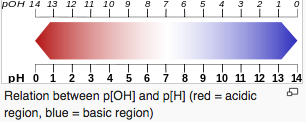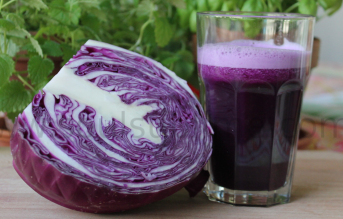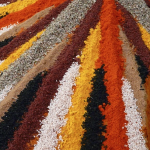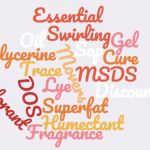Soap and PH Levels
 It’s relatively easy to test the ph levels of your soap.
It’s relatively easy to test the ph levels of your soap.
Testing the ph level of your homemade soap is important to make sure it is safe to use.
Soap and Ph – the most important aspect about your handmade natural soap is to get the chemistry right.
If you don’t have enough lye your soap will be to soft and may take a long time to cure or never cure.
Too much lye causes a caustic bar, which if used would remove any of the natural oils in your skin and possibly cause red skin due to the little pockets of lye water.
There are different ways to test the PH level of you soap, but the most common method is testing with ph strips.
They are easy to use and give you immediate readings.
To use them you simply wet the soap and produce some bubbles and then place the strip on the soap to get the reading.
The Zap Test
The Zap test is another method to test the PH levels of your soap. The Zap Test – named for the zap you will get from lye heavy soap when you place the tip of your tongue on the soap.
This is the way our grandmothers tested their soap in the old days.
Remember though if you are testing your soap right out of the mold, they may test high. Often fresh soap will test a little high, but if you wait until the soap is cured 4 – 5 weeks you will probably find its okay. So test it after it has cured.
The Red Cabbage ph test
I have not tried the cabbage method, but have read about it. Red cabbage is an effective ph  tester. The juice of the cabbage is placed on the soap and if changes color which indicates the ph level.
tester. The juice of the cabbage is placed on the soap and if changes color which indicates the ph level.
To use this method cabbage leaves need to be chopped and placed in a bowl with distilled water.
It must be distilled water because tap water can have minerals etc that can give you inaccurate readings.
3 or 4 cabbage leaves chopped added to a cup of distilled water and then juiced. Strain the cabbage leaves out and the juice can be used for testing.
With this test, if the soap is lye heavy the cabbage juice will turn from purple to yellow or green.
If the soap has a balanced ph the cabbage juice will turn blue.
The ph level of your soap should fall in the normal range of between 7 and 10. Lye has a ph of 14 and water has a ph of 7, if your soap is above 10 that would indicate that free lye is in your soap.
Free lye is caustic and can cause burns, so it is very important to make sure your soap has been made well and is free of any lye.
A Ph reading of above 10 would mean your soaps are harsh and it is an indication that the lye did not mix properly with the oils.
When making cold process soap, it is extremely important that the lye and oils are measured precisely. If not, you can end up with a lye heavy soap that is not safe for the skin.


© 2016 – 2018, Tes. All rights reserved.
Is the Zap test just a case of basically tasting your soap?
If so what are the guidelines? How should a soap with good ph taste?
I think the red cabbage test sounds a bit less disgusting. I will give that one a try I think.
What are the dangers of using a soap with incorrect ph levels?
The zap test is basically putting your tongue on the soap. If you get a zap it is high in ph. If it is ok there will be no zap affect. I like to use the test strips myself.
The dangers of using a soap that is high in ph is that it could burn your skin. Soap that is high in ph can be caustic and is very harsh on the skin.
I have been very interested in starting to make my own soap. I had no clue that I had to test the ph levels. I am glad I have read this post before I start to make some! Where can I buy the ph strips? Thanks for giving us 3 different ways to test the ph levels. I think I am going to try the ph strips.
I like using the Ph strips as well. You can purchase them at any soap supply store. Good luck on your soap making and thanks for stopping by the website.